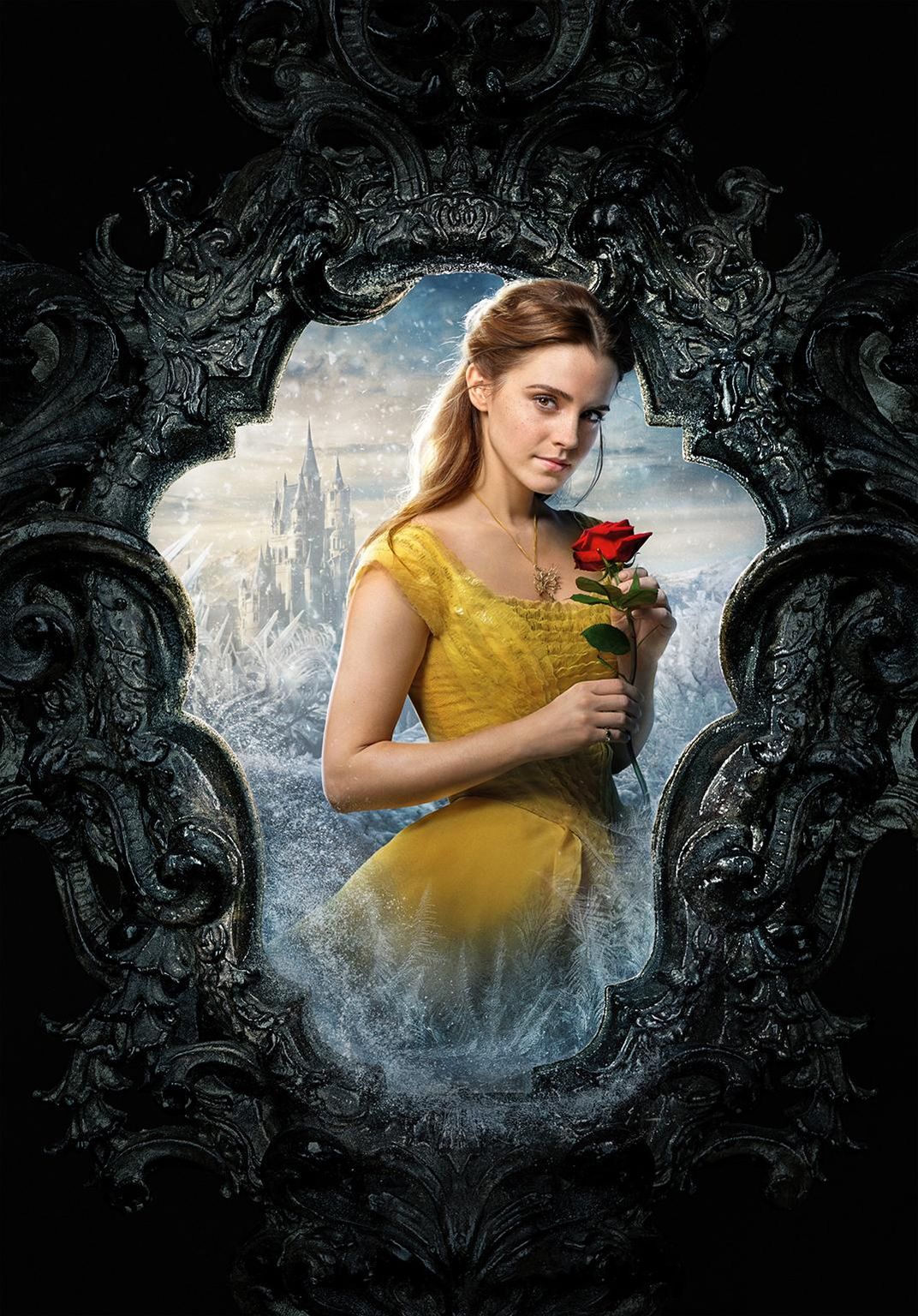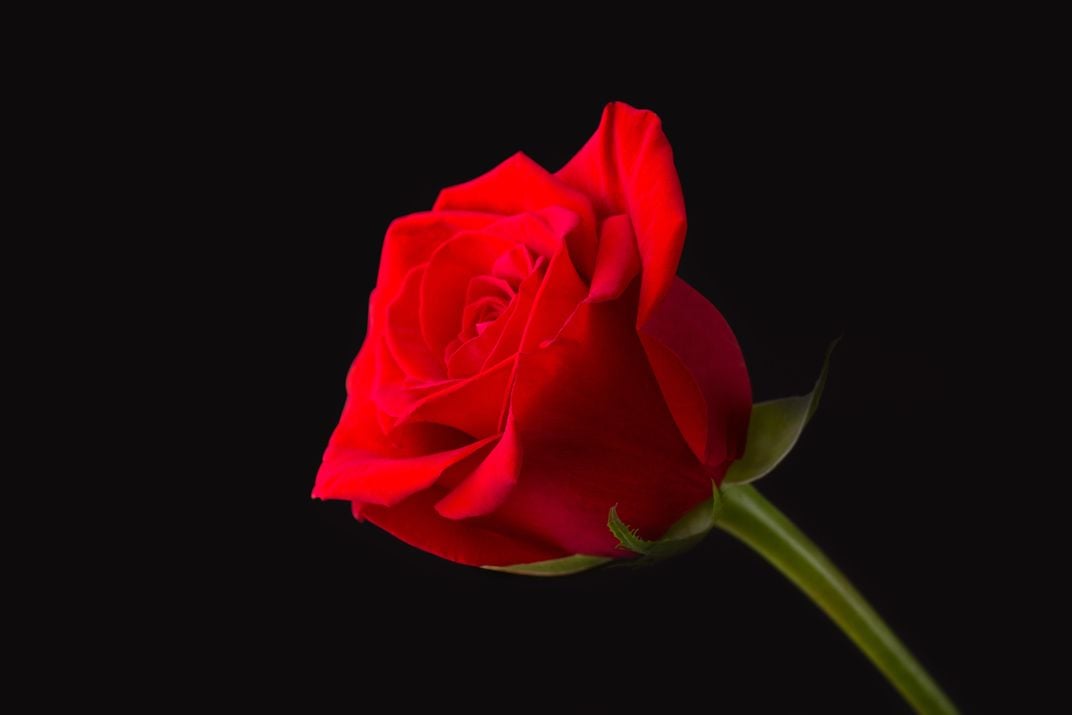The Beast’s Enchanted Rose Lasted a Decade. How Long Can a Real One Last?
A Smithsonian expert says the film’s was undoubtedly a hybrid tea rose
:focal(541x183:542x184)/https://tf-cmsv2-smithsonianmag-media.s3.amazonaws.com/filer/c4/a7/c4a78bd1-80b6-40ff-b530-078b46b8a265/batb2017textlesspostercropweb.jpg)
The red rose has a long history of symbolism—it has been associated with love, progressive politics, the Virgin Mary and the love goddesses Aphrodite and Venus. It is a strong contender for most-chosen rose on Valentine’s Day, but not every red rose will last very long once it’s cut, much less the years the Enchanted Rose is supposed to live in the latest movie version of Beauty and the Beast.
Disney first introduced audiences to the long-lived rose in its 1991 Beauty and the Beast. (A rose factors heavily in the original story tale as a symbol of Beauty's humility, but does not carry a foreboding curse.) An enchantress cursed the young Prince—movie fans speculate he was 10 or 11 at the time—and turned him into a beast for spurning her, based solely on her appearance. She gave him a mystical rose, promising him that it would bloom until his 21st year. If he learned to love and earn love by that time, he’d be turned back into a Prince. Failure would relegate him to beasthood for eternity.
The Beast kept the rose under a glass bell jar in his chambers, watching it drop petals and wilt as the years passed while he searched for love.
Not withstanding the fantasy, “that would be a terrible way to keep a rose,” says Shelley Gaskins, a Smithsonian Gardens horticulturalist. Roses need air circulation to prevent the build-up of ethylene gas that ages a bloom. That’s why florists keep fans blowing inside the coolers where they store cut roses.
Also, note the word “cooler.” Cut roses ideally are kept at temperatures of 33 to 35 degrees Fahrenheit, according to an article by a University of Florida horticulturist, Terril Nell, for the American Floral Endowment, a group that funds floriculture research.
In 2004, Nell also identified roses—including some red ones—likely to last longer than others. “Valentino” could last up to 18 days in a vase, if maintained in water with flower food and room temperatures of 70 degrees. “Red Jewel” might last 15 days, but “Black Magic,” considered an underperformer, lasted 10 days in Nell’s experiment.
Many factors—especially environmental and genetic—influence how long roses in the garden or cut for display will last.
Roses are ancient—perhaps 35 million years old, according to fossil specimens found in Canyon City, Colorado. Those were different roses than what most of us see today.
Most home gardeners grow “modern” roses, that is, varieties that were bred after 1867. Those varieties are a cross of tea roses from Asia with hybrid perpetual blooming roses. Modern roses bloom continuously, have larger blooms than Old Garden or Species (wild) roses, but usually don’t have much of a smell, are less hardy, and not particularly resistant to disease. The American Rose Society estimates there may be as many as 150 varieties of roses.

Gaskins says the Beast’s “Enchanted Rose” is undoubtedly a hybrid tea rose, with all those multiple petals dropping over the years. Most modern roses are pre-programmed to drop petals at a particular time—it’s in their DNA, says Gaskins. In the garden, petals start dropping after pollination. Heat and humidity also age a bloom.
For the Smithsonian’s Kathrine Dulin Folger Rose Garden, which is located adjacent to the 1880s-era Smithsonian “Castle” building, Gaskins selected a few red rose varieties for longevity but also to withstand the vicissitudes of the Washington, D.C. climate—cold in winter and hot and humid in summer. The Folger garden was initially planted in 1997. At that time, “Olympiad,” bred in 1984, and “Legend” (1992) were planted, Gaskins says.
The garden has since been renovated to make it more sustainable, with integrated pest management. Gaskins chose just one red rose for the new garden: “Dark Desire,” a 2014 hybrid bred for disease resistance that is also highly fragrant, she says.
Roses continue to be an object of fascination in art, poetry, film and for gardeners and lovers, in part because “everybody has a connection to roses, and it’s usually familial,” Gaskins says. When she’s in the Smithsonian garden, many people share memories of a mother or aunt or grandmother who had a rose garden, she says.

The rose has its place in history, also, for instance, having been long-associated with anti-authoritarianism. During the Middle Ages peasants displayed roses during May Day celebrations as a symbol of defiance against feudal landlords. After World War II, the rose became a symbol of the European Socialist and Social Democratic parties, and the British Labour Party has used a red rose as its symbol since 1986.
The White House has one of the best-known rose gardens in America. It first became a rose garden in 1913 when Ellen Wilson, the first wife of President Woodrow Wilson, replaced an existing garden.
President John F. Kennedy then asked for a redesign in 1961, seeking to combine the private meditative area with a more public space. A friend, Washington socialite and heiress Rachel “Bunny” Mellon—who later became known for her landscaping prowess—was put in charge of the job, which was completed in 1962.
Kennedy's “concern for the growth and wellbeing of this garden was never ending,” Mellon later wrote. “Often in the late afternoon working there by myself, changing and pruning plants, I would notice that his door would be open. He would be working at his desk. I was aware of and touched by the serious tranquility of this scene. As he left the office, he always stopped to say, ‘Hi,’ or ‘How is the garden doing?’”
The Rose Garden has since become intertwined with important national and international events. But it’s unlikely any of the blooms have lasted for even a tiny fraction of any single presidency.
/https://tf-cmsv2-smithsonianmag-media.s3.amazonaws.com/accounts/headshot/AliciaAult_1.png)


/https://tf-cmsv2-smithsonianmag-media.s3.amazonaws.com/accounts/headshot/AliciaAult_1.png)